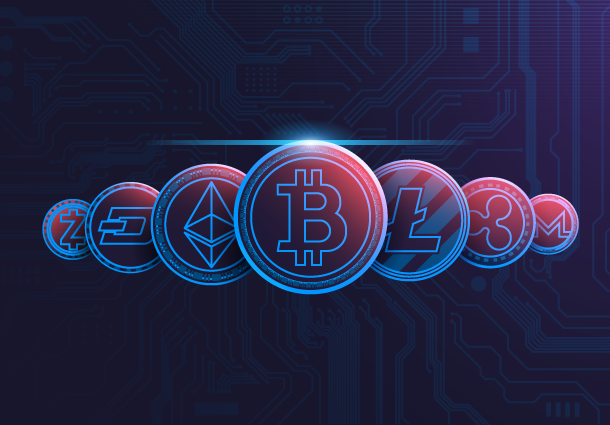This article is written by Jelsyna Chacko, Editor (Legal), Writing Coach and Mentor at LawSikho.
Table of Contents
Abstract
Blockchain technology widely acknowledged as a renaissance in fault resistant distributed computing, is an attempt at digitizing transactions in a transparent manner. The mechanism is designed as a multiple distributed ledger that contains all the transactions ever executed in the network. The most significant feature of this innovation is that, without the interference or control of a third party or any human intervention at all, participants in the transaction, can easily interact without knowing each other. Through cryptographic algorithms, the electronic transactions can be automatically verified and recorded by the nodes of the network. The article goes on to explain the mechanism that is in place to prevent unreliable or malicious nodes, as also the rationale behind it. The author through this article seeks to identify and demarcate the impact Blockchain Technology can have in the future of taxation in India- whether it will prove more advantageous than disruptive or is it merely a wasteful endeavour considering it to be a virtual mirage of convenience and efficiency given that there may be more harm inevitably in store than perceived benefits and boon, while implementing a technology such as this.
Introduction
As was once rightly stated by Jay Samit in one of his TEDx talks, and I quote, “The joy of disruption comes from accepting that we all live in a temporal state.” In today’s age and time, where volatility is the norm, especially when talking in terms of digital transformation, Blockchain Technology occupies the forefront of all such discussions. Blockchain technology widely known to the masses as a disruptive technology has got several heads turning in the recent past. Several businesses, financial institutions and Governments contemplate resorting to Blockchain technology as their modus operandi due to the myriad advantages that come associated with Blockchain operations. On the flip side of the coin is, however, the inherent risks that come associated with it. These are subject matters of serious consideration and cannot be overlooked. Through the course of this article, the author seeks to weigh the advantages with the disadvantages, viewing them from an equal pedestal so as to analyse from an unbiased yet analytical outlook.
Functioning of Blockchain Technology
Blockchain Technology can safely be described as a ledger that controls and performs various digital transactions and helps store and manage information with the help of several nodes forming blocks in the network. It aids in carrying out several transactions without having to know who is at the other end of the network. One of the main attractive features of this technology is its accuracy and potential to curb fraudulent or malicious transactions due to the strict mechanism that it follows with the help of the nodes. Every participating entity needs to verify the transaction before it gets executed, so as to ensure its computational accuracy and efficiency. This technology is based out of two main protectionist mechanisms to fulfil its objectives.
The first mechanism, links each block with the previous block so as to safeguard computational vulnerabilities to amend or change information initially entered. This is made possible with the help of two connected techniques namely – by the use of a hash tree, and the block ‘nonce’. In the former technique, a hash is calculated for each block which includes the hash variables of the preceding block. This is done for every block except for the first which is the ‘genesis’ block. The latter technique is the insertion of the correct ‘nonce’ which allows accurate calculation of hash value over the entire block. Being technically complex to calculate, it is referred to as a Proof of Work (POW). It enables the creation of a specific hash value when the nonce is inserted in the proper location. As can be noticed from the aforementioned description, the nonce being difficult to calculate, it is practically impossible to alter information by replacing one block with another especially if the chain has been extended by six consecutive blocks. Another construct of utmost importance in this regard is the ‘hash pointer’. It helps produce an in-built data integrity mechanism which not only guarantees the location evidence of the data but more importantly accentuates the tamper evidence in the same through the hash value.
The second protectionist mechanism is one based on peer-to-peer consensus whereby majority nodes need to agree on the succeeding block and verify whether the received information complies with certain stipulated rules. This implies that all nodes are considered to be at an equal pedestal with no central trusted authority exercising control, power or authority over the functioning of the Blockchain.
Here, it is pertinent to note that if and when any block on the Blockchain is tried to be tampered with, the block containing the hash pointer of the erroneous block will mismatch, thereby explicitly making evident the malicious error in the Blockchain.
Boons and banes
Blockchain Technology is being resorted to by several companies and start ups for performing several functions substituting the conventional methods of conducting business as also excluding intermediaries in the process. Some of these functions include – making digital payments, smart contracts, ability to track the growth of farm and dairy produce by simply scanning the barcode on the product, and many other similar utility applications which are unimaginable in the current conventional system of affairs.
A number of financial services can be easily carried out with the help of Blockchain Technology (BCT), which would otherwise prove extremely cumbersome and prone to error due to the intermediaries involved. Smart bonds and smart contracts are two of the major innovations being given wings to with this technology. Other classic examples of financial services applications include – asset management, where individuals trade and manage assets and keep accurate records, especially during cross-broader transactions; insurance claims processing can be made much more easy and efficient with the risk–free management and encryption properties that come along with BCT, helping insurers capture ownership of assets to be insured. Other innovative propositions for the use of BCT include – embedding smart technology in tangible and/or intangible assets which decreases risk of fraud and eliminates mediation fees while ensuring trustworthiness and efficiency. Smart technology applications impact a host of functions such as healthcare, music, the internet of things (IOT) and many others, which depicts the omnipresence of BCT in every aspect of our living.
However, on the flipside of the varied advantages and functionalities of the BCT are some inherently underlying disadvantages and vulnerabilities which could pose a threat to potential users and beneficiaries of the same. Some of them include – high levels of inevitable volatility, platform for illicit transactions, as also restricted access and utility to the less tech-savvy individuals.
Another major downside of the BCT is the 51% attack also commonly referred to as double spending. Simply put, double spending lets the miner retrieve the virtual currencies spent over an item even after acquiring the ownership over the item bought. Although this is highly improbable and difficult to be carried out, it cannot be ignored or considered impossible. A malicious miner may duplicate the original chain of blocks and increase the chances of the duplicated chain to be considered authentic. This can be done by increasing the size of the duplicated chain by adding more blocks than is present in the original chain of blocks, thereby shifting focus from the original chain to the duplicated one, considering the latter chain authentic. Although the resources, funds and effort needed to execute the 51% attack may outweigh the benefits accruing thereby, it is still resorted to by malicious miners.
Being a fundamental revolution in the digital landscape, IT doyens like UB Pravin Rao, COO of Infosys, in his interview with NASSCOM, talks about the opportunities that arise for Companies with the onset of disruptive technology, and also the positive steps taken by the Company to protect its clients deal with the many repercussions they may potentially also face as a result. He stresses on the use of ‘Design Thinking’ as a tool to leverage many issues. This methodology being adopted by Infosys, focuses on “identifying the right problem to solve”, thereby bringing in clarity, as opposed to waddling through the many issues that may arise all at once and getting lost in the context of priority. It centres at challenging the status quo, thereby enabling and promoting a cultural shift in the state of affairs along with creativity.
Potential application of Blockchain in Government functions
At a time when trust in the Government or any human entity has reached its lowest ebb, solutions based on a “no-trust” system helps citizens revive their long lost trust in the state of affairs. Blockchains being designed around information security and cryptography prototype, data security is given utmost importance ensuring integrity and accountability in the functioning. Another noteworthy point when talking about security, is the decentralization of the Blockchain process, combined with incentives in securing the network.
Government functions mostly revolving around record-keeping and safeguarding, BCT could prove a major relief when it comes to secure and accessible record storage.
They can also be used for more accurate and trustworthy voting systems as against the currently vulnerable, time consuming and financially demanding Voter Verifiable Paper Trails and Electronic Voting Machines.
However, when it comes to Government functioning with the help of Blockchains, chances of resorting to permissioned Blockchain would be higher – so as to safeguard the Government’s interests, as opposed to utilising a public Blockchain which functions on a trust-less paradigm. This could however prove problematic, since participating parties or the stakeholder nodes so to say, need to be carefully chosen so as to ensure proper governance while keeping in hindsight the possibility of political manipulation and centralization of the key functions of the Blockchain. This would provide a false sense of security to the general masses.
Other examples of Blockchain Technology applications by the Government would include – curbing personal information available to companies when customer’s data is sold to myriad entities for advertisements. BCT in this regard can ensure protection of an individual’s data such as not to be misused by spammers and marketing schemes. This can be done by creating a protected data point where only the information that you want relevant people to know at certain times is encrypted.
Today, every individual carries myriad personal identification proofs. This can be replaced by singular Blockchain ID which is stored on a block and can be made accessible to the respected authorities whenever required. In the future, fintech scientists say that ‘one digital ID for signing up at any registrar is all that is required. It is open source, secured by the Blockchain, and protected by a ledger of transparent account’ Similarly important records like birth, wedding and death certificates can easily be maintained and protected by encrypting the same.
Another major hurdle faced in property dealings in India is fraud due to erroneous representation of land and property records. Even the process of verifying documents and registration process is excessively time-consuming, costly and prone to corruption. With the introduction of BCT in this arena, this entire process can be put to ease with the help of smart contracts and Blockchain based land and property registrations. Benami transactions and circumventing tax procedures can be avoided with the linking of Aadhar and PAN, with Blockchain technology as its functioning base.
Position in India
Several State Governments like Telangana, Andhra Pradesh, Karnataka and Maharashtra have taken the initiative to plunge into the Blockchain arena for e-governance in the fields of agriculture, horticulture, supply chain management, etc. Pilot programmes have also been initiated in Hyderabad for BCT in land registration and integration with the state revenue department in association with Centre for Development of Advanced Computing (C-DAC).
Similarly, the Government of Karnataka is proactively engaging in creating an environment to enable Bolckchain technology by holding summits, conclaves and hackathons to deliberate with officials and the society at large on the use of Blockchain technology in e-governance
In a quest for examining Blockchain opportunities for India, The Reserve Bank of India set up the Institute for Development and Research in Banking Technology (IDRBT) to analyse and scrutinize the applications of BCT to Banking and Financial Sector. Accordingly, the IDRBT came up with a whitepaper in this regard which sought deliberations from academicians, bankers, regulators and technology partners. The report clearly suggested a positive outlook at the potential benefits in implementing BCT in India. It examined the use of the technology on conventional applications such as trade finance, cross-border payments, etc as also the possibility of it implementing better Know Your Customer (KYC) and Anti Money Laundering (AML) process so as to completely curb practices of money launderers and bring them under stricter scrutiny of the law. BCT would also be a major breakthrough which could help better regulate consortium loans in the banking sector in India.
The report suggests the creation of a private Blockchain, so as to get started with developing the infrastructure it needs. Further exploration of DLT’s Proof-of Concept implementation and testing is recommended for the banking industry so as to develop a centralised KYC repository, cross-border payments, syndication of loan, trade finance and capital markets, this is primarily because of the number of stakeholders involved in the transaction. The IDBRT also partnered with the National Payments Corporation of India (NPCI) along with several banks to study the feasibility of using Distributed Ledger Technology for domestic trade finance with a sight letter of credit and enhanced information payments. Recently ICICI Bank partnered with Infosys to develop a Blockchain-based international finance system. Following suit was Axis Bank partnering with Ripple to become the first bank in India to use a Blockchain network for cross-border payments.
With the onset of a uniform Goods and Service Tax (GST) across India, revenue generation for States has taken a different course altogether. Keeping record and a diligent track on the different components of the taxes and transferring the due revenues to the respective States is perceived to be very well managed by BCT. Different State officials and governing authorities could act as stakeholder nodes, which would ensure a quick and error-free transfer of taxes between Central and State Governments. As on the current functioning of GST, online filing requirements entail taxpayers entering the data, GST authorities confirming the same and eventually getting admitted into the system after which the Government checks it. This is not only time-consuming and cumbersome, it has the potential to lead to nerve-wrecking experiences faced by individuals. All this can be substituted by the emergence of BCT in the sphere of taxation and GST in particular.
While filing returns under GST, the taxpayers must regularly reconcile their data every month with the data declared by its vendors. The returns filing and processing are automated and linked to GST returns. Oftentimes, discrepancies arise due to the existing loopholes in the current system of tax governance, such as – mismatch of self-declared summary return Form GSTR-3B and auto- generated Form GSTR 2A, thereby causing GST authorities to issue notices to taxpayers to reconcile the discrepancies, use of fake invoices to claim Input tax credit (ITC), etc. The process of reconciliation therefore helps in ensuring – that the credit is claimed only with respect to the tax which is actually paid to the supplier; no invoices are missed or recorded more than once and other errors of a like nature which require alterations in the records after due correspondence between the GST authorities and suppliers. However, with a software such as the BCT, all these processes can be rectified in a time bound manner without having to interact or correspond with human entities. However, just like other use cases, the adoption of BCT in GST should take place only after the necessary testing.
As on today, the Central Board of Direct Taxes (CBDT) is quiet on guidelines on the taxation of virtual currencies or Blockchain applications. When considering the taxability of these currencies/applications, much really depends on whether they fall within the ambit of an ‘assest’ or a ‘currency’. Nonetheless, anything accruing as “income” under Section 2(24) of the Income Tax Act, 1961 needs to be subject to tax regulations.
If virtual currencies or Blockchain applications are considered as ‘currency’ in India, the income accruing from ‘exchange of regulated currencies’ due to their value fluctuation would result in them being considered as “income from other sources” under Section 10 (20) of the Income Tax Act, 1961, and income through ‘regular trading in virtual currency tokens due to price fluctuations would be treated as “income from business” under Section 9 of the Income Tax Act, 1961. Earlier in 2007, the CBDT set out a test to determine whether shares fall under the ambit of an investment or stock-in-trade, while also recommending that the same parameters can be applied to virtual currency tokens.
On the other hand, in India, if virtual currencies or blockchain applications are considered as an ‘asset’, the presumption of it being an intangible asset would attract tax on ‘Income from Capital Gain’ (Section 2 (14) of the ITA, 1961), whether virtual currencies are sold for cash or in exchange for goods or services. This capital gain can further be divided into short term and long term capital gains. The former attracts 30% tax on income exceeding 10 Lakhs per annum; and the latter attracts a 20% tax rate.
Regulations implemented across the globe
Several countries across the globe have implemented regulations so as to bring about systematic and organized functioning of BCT. For example, the European Union having taken a strong stance on Data Privacy Regulations, has significantly impacted regulations surrounding BCT as the “right to be forgotten” in the General Data Protection Regulation (GDPR) may contradict the immutability and decentralization that is promised and intrinsic to BCT. Therefore, blockchain companies will have to ensure that these GDPR standards for data ownership are met.
Some countries like those in East Asian nations initially had no regulatory frameworks with respect to BCT as the governmental agencies have prioritised business over regulations. China and South Korea put a ban on Initial Coin Offerings. Japan, on the other hand has regulated only the cryptocurrency – Bitcoin and have left Blockchain application unregulated so far. From July of 2017, it discontinued the levy of 8% consumption tax on virtual currency exchanges so as to reform the entire tax structure. The trade of virtual currency for assets or services, nonetheless, is still liable for consumption tax.
Virtual currencies have been defined as digital currency bringing it within the ambit of an asset, as per the Reserve Bank of Australia. A financial intelligence agency has been set up so as to keep a security check on transactions to curb criminal activities like tax evasion, fraud, money laundering, etc.
New York, on the other hand has set in place an exhausting regulatory framework for blockchain applications. Mandatory licensing, supervisory policies, compliance and due diligence has been given importance to for any corporation involving any sort of digital currency business. Four bills have been introduced in the State Legislature to regulate its functioning by the Government. The first one proposes amends to certain definitions of Blockchain applications like smart contracts. The second Bill concentrates on state elections, whether Blockchain can really help prevent fraud and maintain better records, etc. The third Bill proposed to study whether the Blockchain platform can be used for effectively recording and storing State Government information. The last Bill studies the impact of virtual currency tokens on New York financial markets.
The Securities Exchange Commission has declared Initial Coin Offerings (ICO)a part of sale of securities and so as to regulate the transactions and have made it mandatory for corporations to register ICOs before they trade. It was also made mandatory for investors o be informed about the purpose and nature of which Blockchain application is having coin offerings, when public or private distributed ledger system.
Policy suggestions and the way forward
Blockchain Technology can therefore be presumed to be a good bet so far as the many solutions it promises to provide, however, the same can be implemented and adopted only if there are regulations and policies in place so as to ensure its effectiveness devoid of malpractices and other evils that may come inherently with any technology. Several countries across the globe have embraced BCT along with certain regulatory policies in place so as to effectuate smooth implementation.
It is highly essential while policies and regulations are framed in this regard to keep in mind certain key objectives such as – how can regulators and tax authorities enforce regulations or laws against entities existing behind a Blockchain?, what forum will deal with disputes arising out of Blokchain transactions?, in the event of an untoward error, how can it be corrected and who will be liable for the same?, as also designing the Blockchain protocol so as to coincide and respect the requirements of the EU General Data Protection Regulation (GDPR) and suggestion being staged by the Srikrishna Committee for Data Privacy and Protection in India (SDPI). It also important to ensure that Initial Coin Offerings (ICOs) are strictly regulated so as to avoid businesses being run on Blockchain turning into Ponzi schemes.
As a foreseeable concern is also the need of a uniform regulatory framework for Blockchain applications so as to avoid business entities from using favourable regulations from multiple jurisdictions at different points of time during their course of business.
Conclusion
Having emerged in the recent past, Blockchain Technology is still in its nascent stages and is not considered to be a fully matured technology. This is not to say that the technology is inherently flawed in design or in its proposed functions. Being in its absolute raw form as on today, Blockchain is being used for several disruptive utilities – to commit fraud, money laundering and other illegal transactions – all these being accentuated by regulatory uncertainties. It is not uncommon for Start Ups and companies or organizations relying on this Technology to resort to using the technology as a Ponzi scheme, since it is bound to take a while for the technology to gain momentum so as to breakeven and meet the desired results.
Therefore, in order to reach an equilibrium between the stark possibilities of the implementation of Blockchain applications and currencies, it is of utmost importance to bring into effect, effective regulatory frameworks and policies. This will not only prevent the technology being viewed as the path leading to Pandora’s box, but will also eliminate the ‘mirage’ in the perceived convenience it is presumed to bring in everyday lives and affairs, thereby proving to be next digital Big Bang.
LawSikho has created a telegram group for exchanging legal knowledge, referrals and various opportunities. You can click on this link and join:
 Serato DJ Crack 2025Serato DJ PRO Crack
Serato DJ Crack 2025Serato DJ PRO Crack











 Allow notifications
Allow notifications



